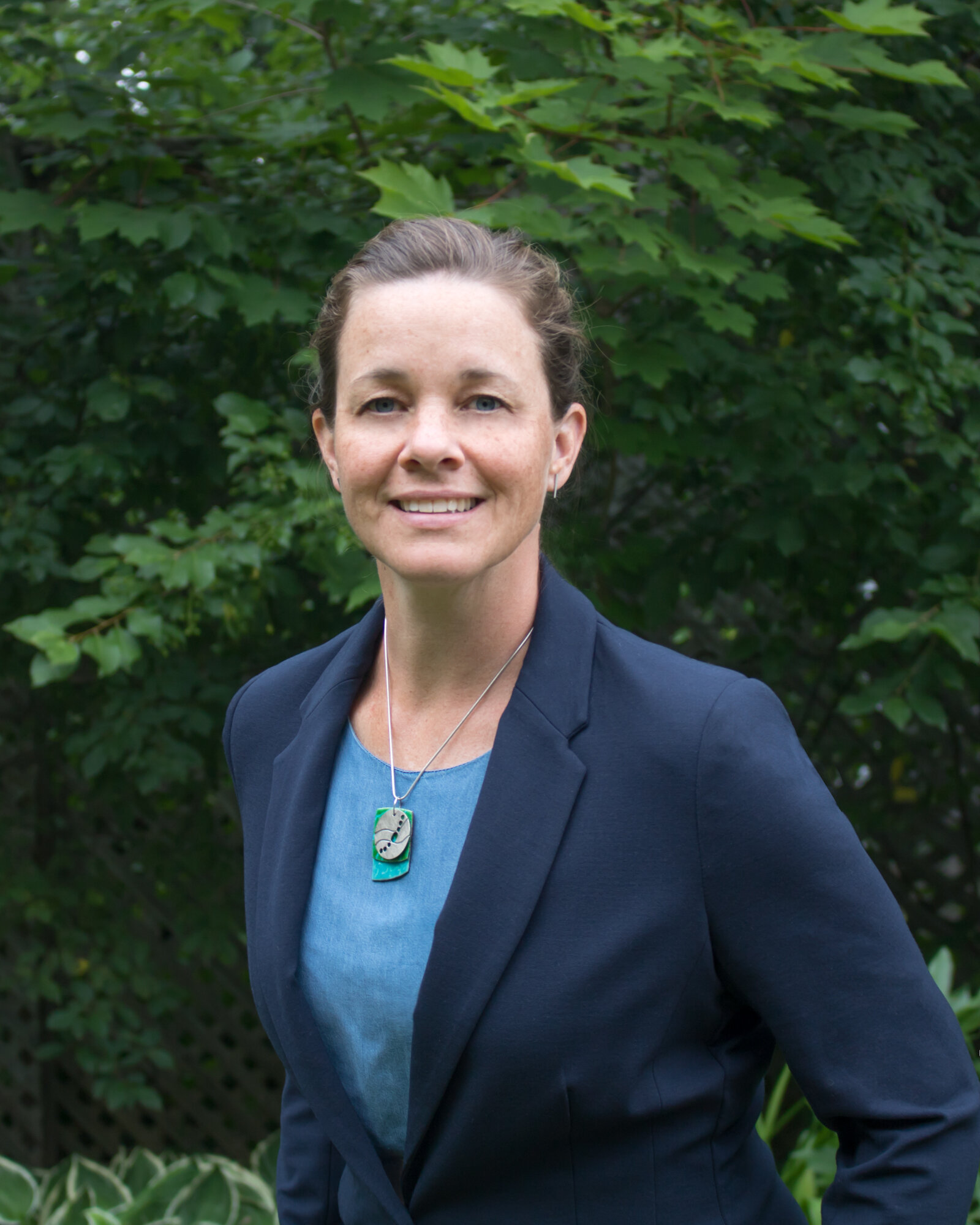Recent Articles
Categories
“There [has been] a big conversation and dialogue about the river, how important it is, and how many peoples’ lives were affected when they became afraid of something they always took for granted to be safe”, says Dr. Janice Lawrence, Professor and Associate Dean of Science at the University of New Brunswick. Janice has found herself explaining her research on toxin-producing cyanobacteria distribution to lake associations and cottage owners alike, due to the growing concern that the bodies of water near them could be potentially hazardous. However, it was not Janice’s initial plan to be studying cyanobacteria, a prominent type of photosynthetic bacteria. Janice did her PhD at Dalhousie University studying toxic phytoplankton, a type of marine algae, and became interested in why toxic blooms, or the rapid increase of toxin-producing organisms, occur in some places in the ocean but not others. Eventually, she learned that researchers had discovered there were viruses that were killing the blooms, pivoting her research ambitions to virology. Years after she completed her PhD, she came to UNB to continue studying viruses, and currently teaches a virology course. It was while working at UNB that she began to see the increasing concern for freshwater blooms being covered in the news.
She initially dismissed it, as freshwater blooms were not her area of study. However, out of curiosity, she later decided to look into the Government of New Brunswick’s website for the listing of lakes which had been identified as a public health concern due to the presence of dangerous toxic cyanobacteria. She noticed that the method used to determine the toxic cyanobacteria concern was just to examine the cyanobacteria under a microscope. Essentially, if cyanobacteria were identified at a lake, the lake was labelled as a concern. Janice immediately knew that this method was misleading. In order to really know if the cyanobacteria were capable of producing dangerous toxins, molecular tools would have to be used to identify if any harmful toxin-producing genes were present in the sample of cyanobacteria. The molecular tools that were needed happened to be the same tools she was using in her current research on viruses. This sparked the realization that someone needed to examine the freshwater environments using a molecular approach, and since Janice already had a proficient understanding of the methods needed, she decided to be the one to give it a shot.
Janice’s initial approach was to take a look at some of the lakes that were listed by the Government of New Brunswick, gather materials, and use genetic approaches to determine the actual toxin concern. Determining such toxicity involved doing a literature research, where she discovered that the toxin biosynthetic pathways, which are the multi-step processes where an organism produces an end-product such as a harmful toxin, were already identified and further supported by well-established genetic literature. With this new knowledge, she had all the necessary components to run a Polymerase Chain Reaction (PCR), a common research method used to amplify the amount of DNA available to analyze, done by making millions of copies of a small DNA sample. This amplification can be used to isolate and analyze fragments of the DNA sample that would normally be too small to properly examine, such as a section of the cyanobacteria genome that may contain toxin-producing genes. PCR is a technique that even undergraduates can perform, which excited Janice about how she could now get students involved in her research more easily. When describing her first summer working on this research, she mentioned how every week or two she would visit the first lake the government listed as hazardous, being Lake Utopia. After arriving there, she would go for a paddle in her canoe, simultaneously collecting cyanobacteria samples with students. Once they collected the samples, they would drive back to the lab, run the PCR, and then locate the toxin-producing gene. In this case, it drew her to the conclusion that when Lake Utopia gets blooms, there is a good chance there are toxins, therefore justifying its spot on the list of concerning lakes.
After her initial success, Janice planned on repeating the process with multiple other lakes on the list. However, her plans soon changed. In July of 2018, three dogs in the Fredericton area passed away shortly after visiting the St. John River. A quick-thinking veterinarian was able to recognize the symptoms as the work of neurotoxins. After talking to the owners and discovering that the dogs had been around the water, it started to seem like there may be a cyanobacteria toxin involved. Janice had already been interested in studying neurotoxins. She had run a PCR on environmental samples in the past, but due to the lack of a positive control, she was unable to interpret the results properly. However, after the dogs died, she went to the river to collect a water sample, and sure enough, it became her positive sample. The necropsy results determined that the neurotoxin was anatoxin-a. Having already done some literature research, Janice adopted her previous methods to work with anatoxin-a, immediately allowing her to study this lethal neurotoxin further.
Once her new methods were established, she was then able to start looking at the toxin production, and discovered that the anatoxin-a involved was being produced in a completely different environment than expected. Cyanobacteria blooms are usually associated with stagnant, low-flow lakes at warm temperatures, resulting in a green indicator at the water’s surface. For anatoxin-a, this was not the case. Instead, the toxins were found at the bottom of the river, in benthic, filamentous material attached to rocks. Additionally, they were found in flowing environments as opposed to stagnant ones. The typical visual cues suggesting toxin presence were not to be seen at all, which took everyone involved with the research by surprise. Janice explained the process behind the dogs’ exposure to anatoxin-a as beginning with mats of mixed cyanobacteria communities, some of which are potent neurotoxin producers, at the bottom of the river. The mats then rapidly grew during the summer, and due to increased photosynthesis, they filled with bubbles from their oxygen production. These bubbles lead to the mats being ripped off the bottom of the river, where they then floated to the top, traveled down the river, and eventually washed up on shore. It was here that the dogs ended up eating some of the cyanobacterial mats, and ultimately ingested the neurotoxins.
Further research in other locations with river benthic mats of anatoxin production shows that this is not an isolated incident. New Zealand is cited as having similar environments, as well as many associated dog deaths. New Zealand researchers have been able to determine that there is a compound produced by the benthic cyanobacteria that is an attractant to dogs, meaning they are actually drawn to it specifically. Janice mentions that while dogs are especially susceptible, the toxins would have the same effect on other species with a nervous system. The toxin works by binding to the neuromuscular gap in a vertebrate’s muscular junction, where neurotransmitters would bind. The toxin binds with twenty times the efficacy as the body’s neurotransmitters, blocking them from binding altogether. This leads to diaphragm muscles not receiving the nerve control that they require to induce breathing, resulting in paralysis and suffocation. While anatoxin-a is considered a lethal risk to dogs, Janice considers it to be likely a low risk to humans, as it has to be ingested for any damage to be done. However, she acknowledges that specific demographics are more susceptible to risk than others, such as children who may play in it, and weaker swimmers who may accidentally ingest lots of water. She also states that the toxin can accumulate in fish guts, and recommends not eating those contents of a fish, but rather the muscle. She references New Zealand’s research, which, while having well-documented dog deaths, does not have any conclusive results about the toxin’s relationship with human illness.
Janice intends on learning more about the variety of toxins that may be present locally, seeing what their toxicity is relative to the known compounds, and seeing if that is reflected in their genetics. Along with working with students, Janice collaborates with another UNB professor, Dr. Adrien Reyes-Prieto. Janice describes her role as being more directly involved with the field samples, figuring out which samples are of interest and designing the next questions. Dr. Reyes-Prieto’s role, on the other hand, is more concerned with looking at the diversity within the cyanobacterial genes. There is also a postdoctoral researcher helping the professors out with bioinformatics analyses, providing a more significant snapshot of the toxin pathways that are available and what they may do.Janice hopes that her research encourages the use of more appropriate tools for protecting public health, as she believes there may not be enough expertise at the regional level to provide sufficient warnings for people to make informed decisions under similar circumstances. Thinking about the bigger picture, she says her research has resulted in many discussions about environmental issues, as while the cyanobacteria being in the Saint John River are natural, there are reasons to consider that environmental issues including those related to climate change have influenced the current toxin-filled state of the river. Janice considers her current work to be the most tangible research she’s done, adding, “When a grandmother is calling you on the phone, wondering if she should drink her water, can her grandkids brush their teeth, there is a sense of pride and ownership, and just being so thankful to have the chance to help and make a difference.”







